osm2streets
Street networks with detailed geometry
Dustin Carlino, Ben Ritter, Michael Droogleever
21 August 2022, State of the Map in Firenze
Talk outline
- Background
- What osm2streets does
- Example transformations
- Challenges and next steps
Background
My general story
- Quit big tech in 2018
- Open source software to…
- Transition cities away from motor vehicles, towards walking, cycling, public transit
- Engage communities in designing, not just voting/approving
Map not just what exists…
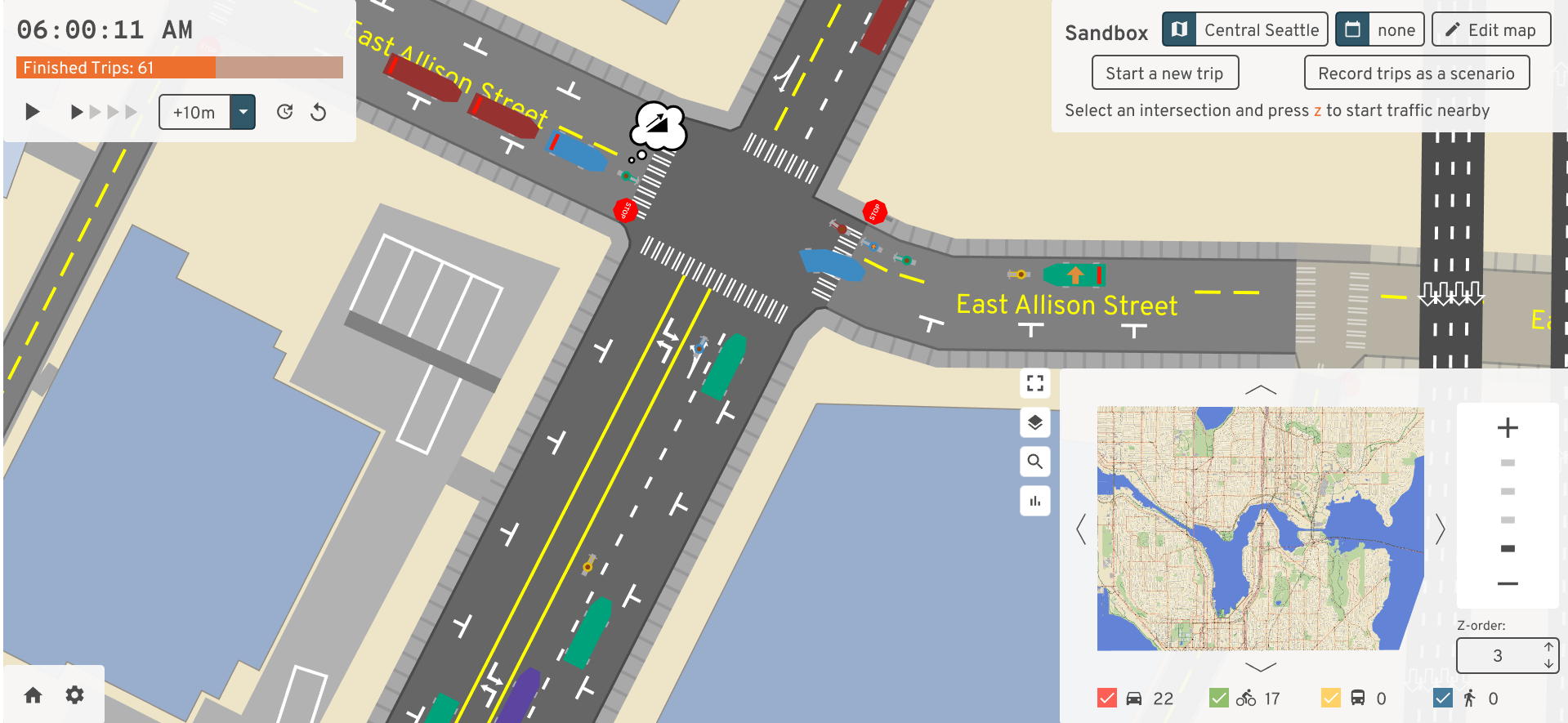
but the future world I think we need
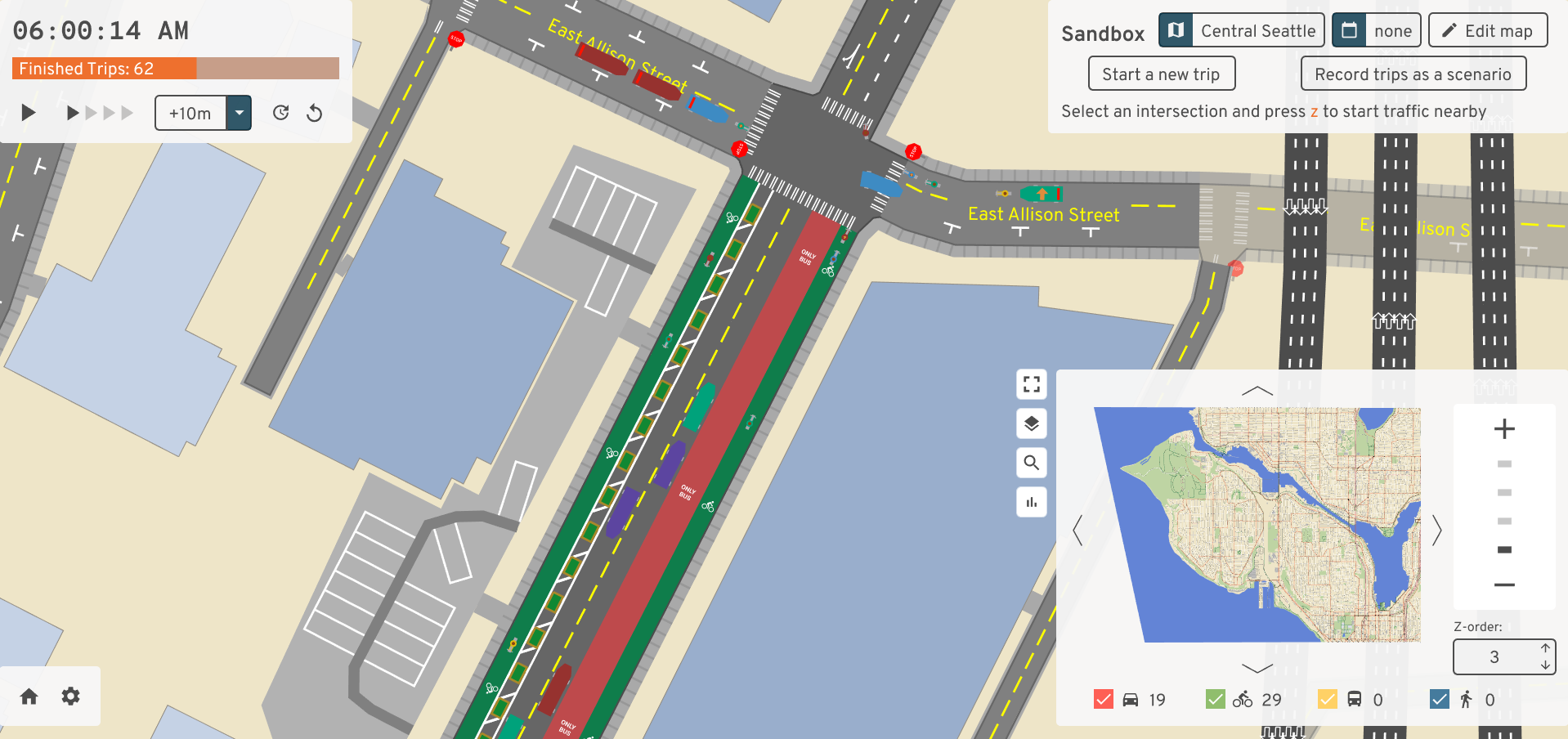
A/B Street

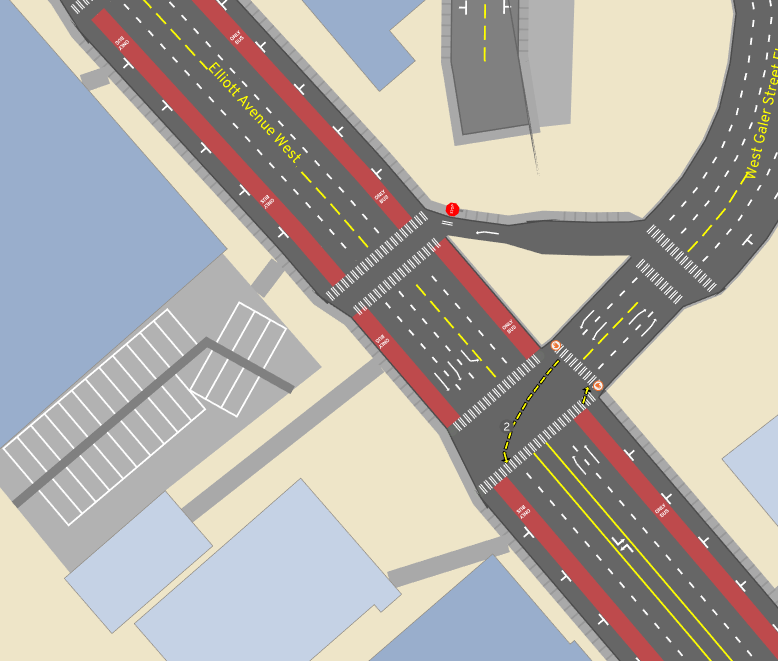
A/B Street
- Squeeze detail out of OSM – individual lanes, turns
- Guess missing data
- Sidewalks, crosswalks
- Infer traffic signal timing, number of parking spaces
- Two modelling choices in OSM cause havoc over and over
Problem 1: short roads

- OSM represents roads as a center-line
- Some segments of that are the middle of an intersection
- “Dog legs” – almost a 4-way intersection
- Also between dual carriageways
Problem 2: parallel roads, separate objects

Problem 2: parallel roads, separate objects
- A different way for each side of a dual carriageway, cycletracks with some protection from the road, sidewalks
- Why tag this way?
- More detail
- String key=value schema makes tagging one object awkward
- (Would JSON, nested lists help?)
- 3 years ago: Is the OSM data model creaking? by CycleStreets
Consequences: rendering
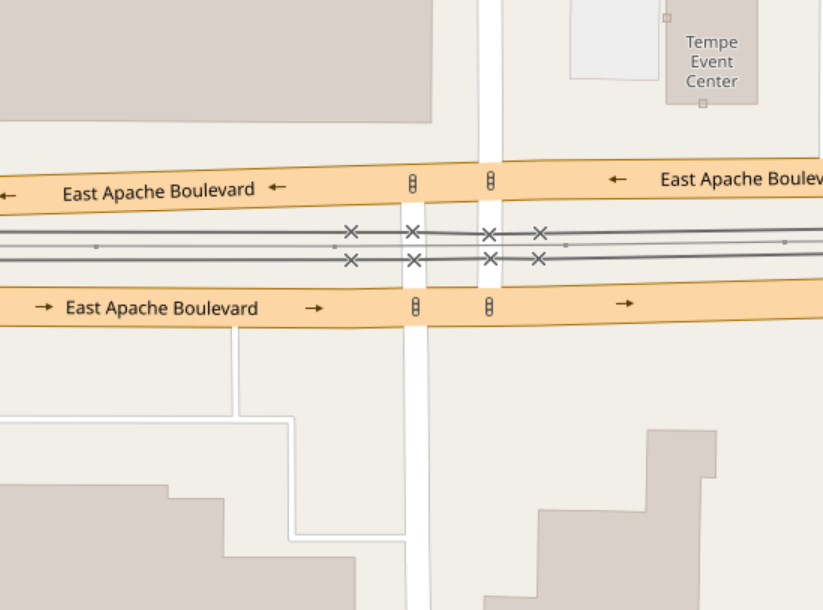
- 8 intersections
- 10 road segments that’re really part of the intersection
Consequences: rendering
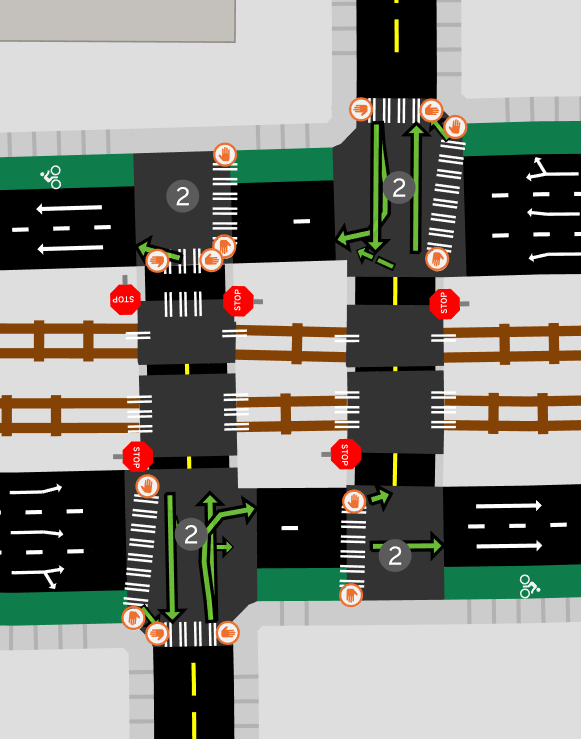
Not ideal, but still usable
Consequences: rendering
Consequences: traffic simulation

Consequences: traffic simulation
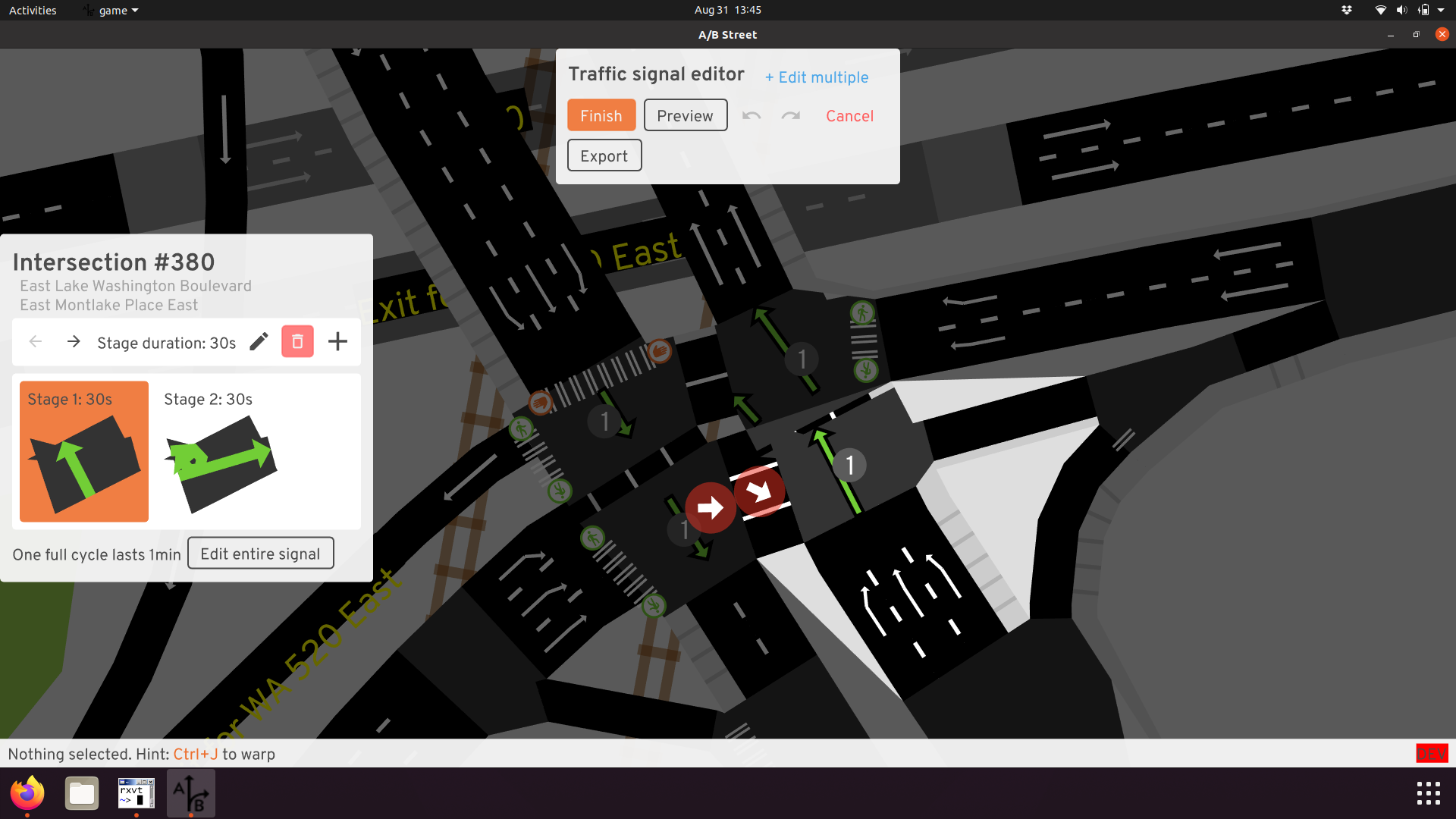
Consequences: editing a road’s lanes

Consequences: tracing between roads
Consequences: tracing between roads
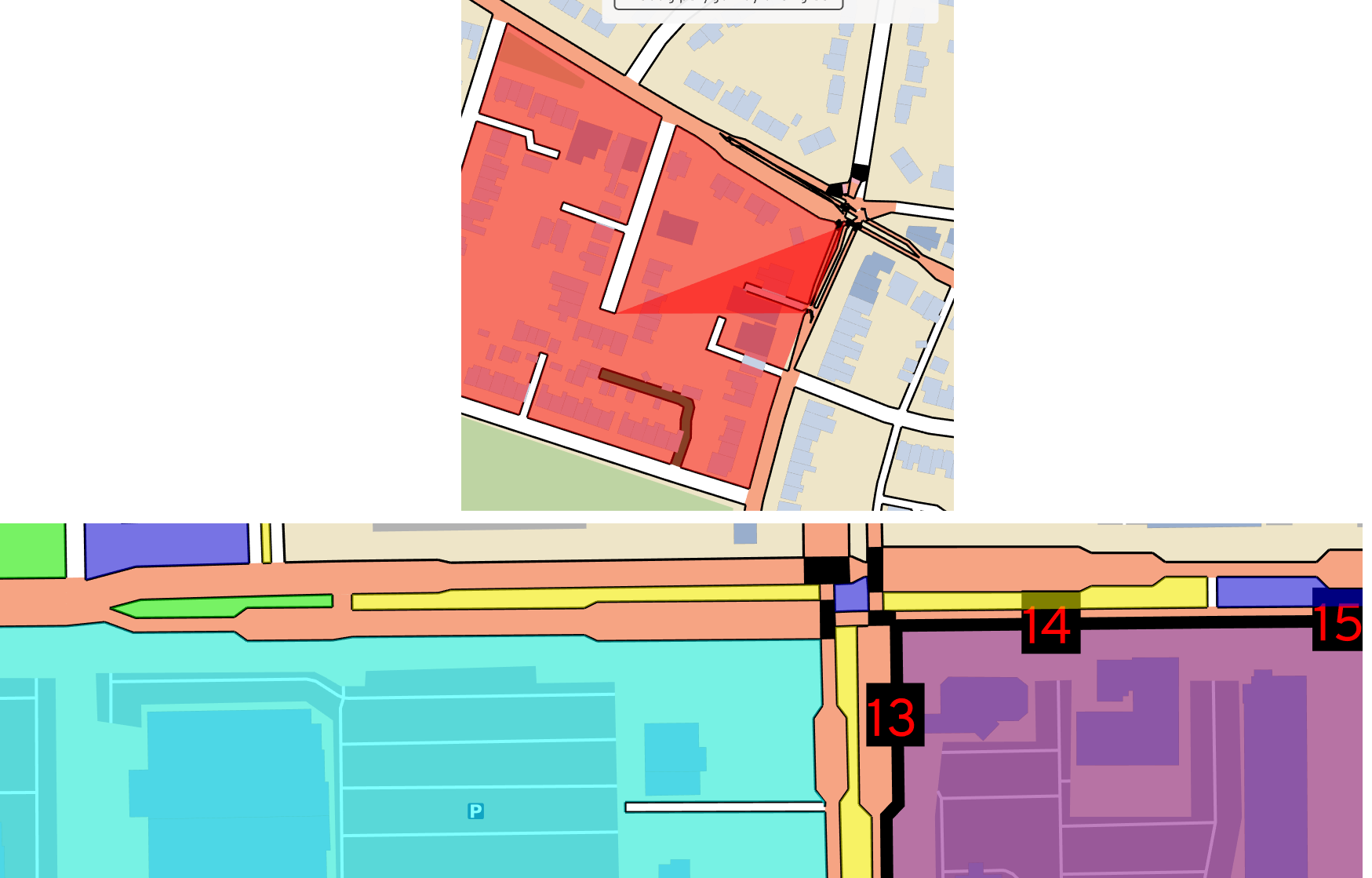
Consequences: other projects
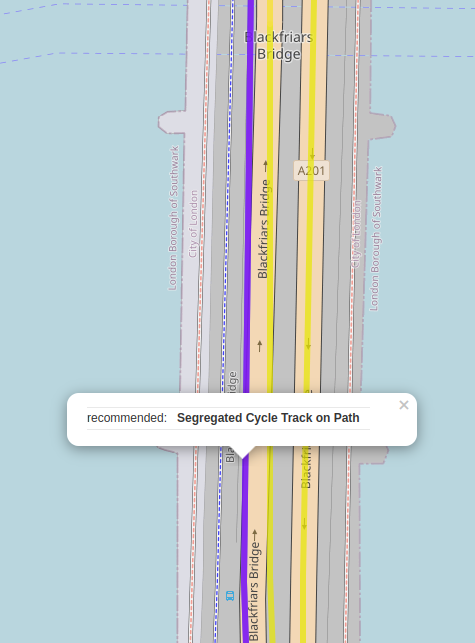
- Cycling Infrastructure Prioritisation Toolkit says Blackfriars need a cycle lane
- Routing instructions / how many traffic signals crossed
Inspiration

- The state of the art by Berlin OSM community
- https://strassenraumkarte.osm-berlin.org/?map=micromap#20/52.49555/13.42073
- Pocket parking, curb bulbs, complex junctions
Inspiration

Can we do this everywhere?
One common problem
- Each of these problems might have a workaround for each domain
- (But it might be very complicated…)
- What if there’s a better data model to consume instead of OSM directly?
- What if we can solve all of these problems at once?
What osm2streets does
The demo: Tempe
The demo: St George’s cycletrack
Post-processing OSM into a strict schema
- Roads
- A center line-string, but thickened with a total width
- A list of lanes from left-to-right
- Type (general travel lane, bus lane, cycle lane, parking, sidewalk, grass median, striped buffer with bollards)
- Width
- Direction
- Derived geometry: a thickened line-string
The schema
- Intersections
- Complexity classification: regular crossing, uninterrupted connection (turn lane appears), multi-connection (a dual carriageway splits), terminus (dead-end)
- Control: uncontrolled, stop signs, signalized
- A polygon
- The roads exactly meet this polygon at a right angle
- Movements through the intersection
The schema
- Partly a graph (routing)
- Not a simple one: turn restriction relations with multiple
viaways
- Not a simple one: turn restriction relations with multiple
- Semantics
- Is the cycle lane protected from traffic?
- Geometry
The architecture
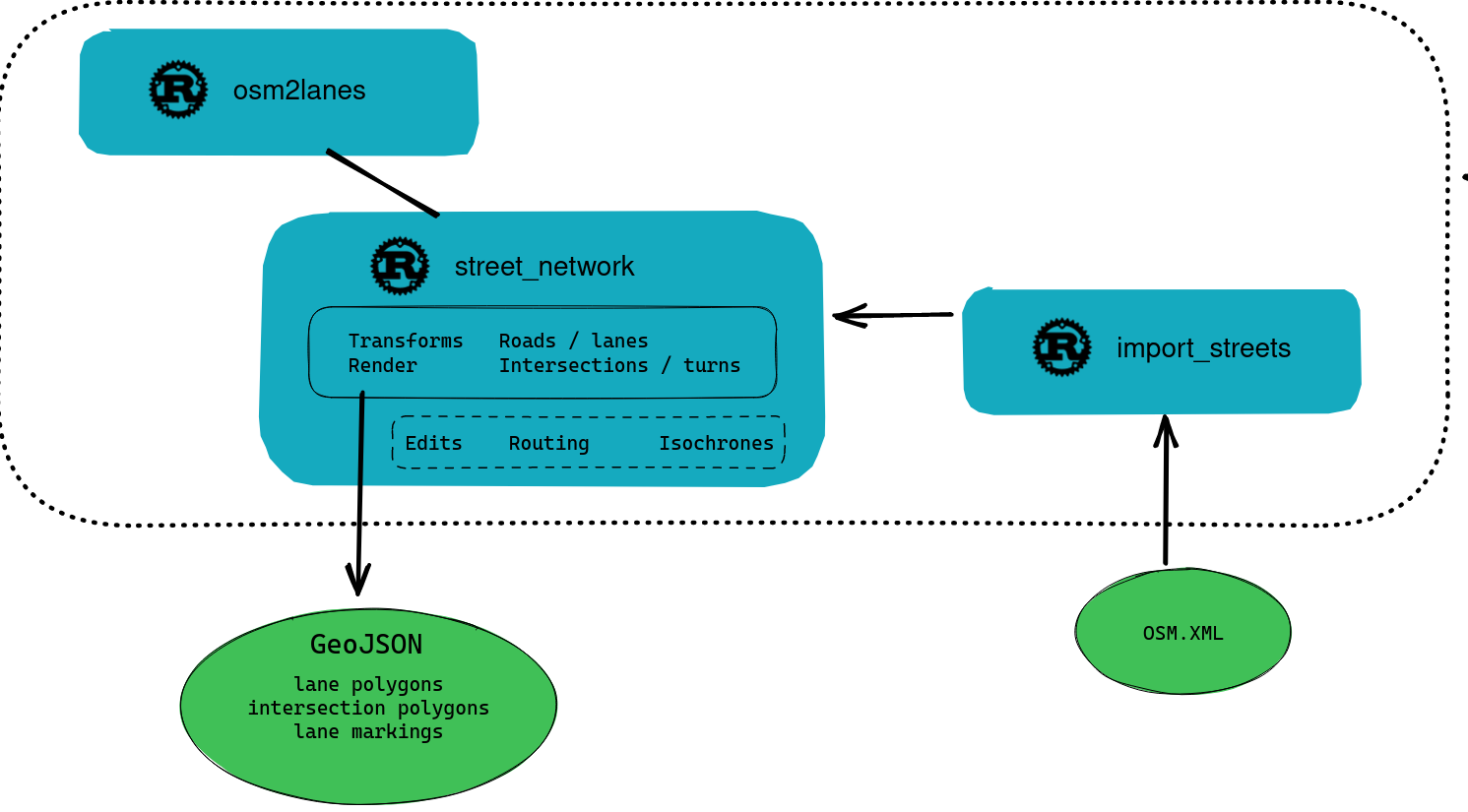
The architecture
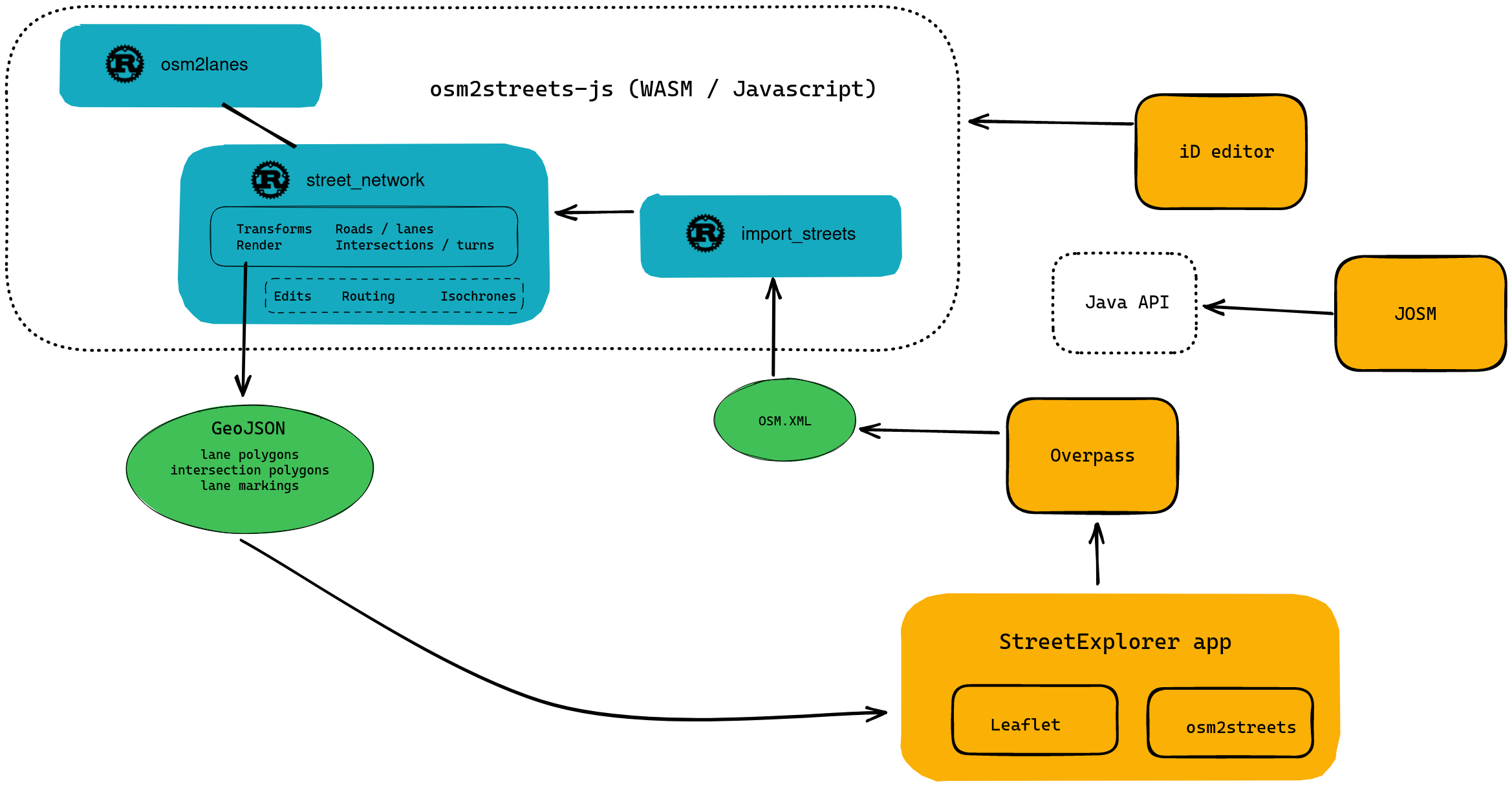
How it works
- Parse OSM XML, extract raw data
- Split ways into road segments (giving a graph with tags on edges)
- Lanes per road segment
- Still using one big function (with unit tests)
- Proper rewrite: osm2lanes
- Sidewalks are often not tagged, make some configurable guesses
How it works
- Transformations to fix various problems
- collapse “degenerate” intersections between 2 roads
- find and merge “short” roads into one intersection
- collapse simple “sausage link” patterns
- detect and collapse more general dual carriageways
- if all else fails, shrink physically overlapping roads
- merge parallel cyclepaths with the main road
How it works
- Generate polygons for the intersections and roads
- “Trim back” the road center-line from the intersection
Long article, lots of pictures: https://a-b-street.github.io/docs/tech/map/geometry/index.html
How you can use it: OSM community
- a new renderer for your hard work
- validation for lane tagging
- WIP: osm2lanes editor, don’t learn complex lane tagging
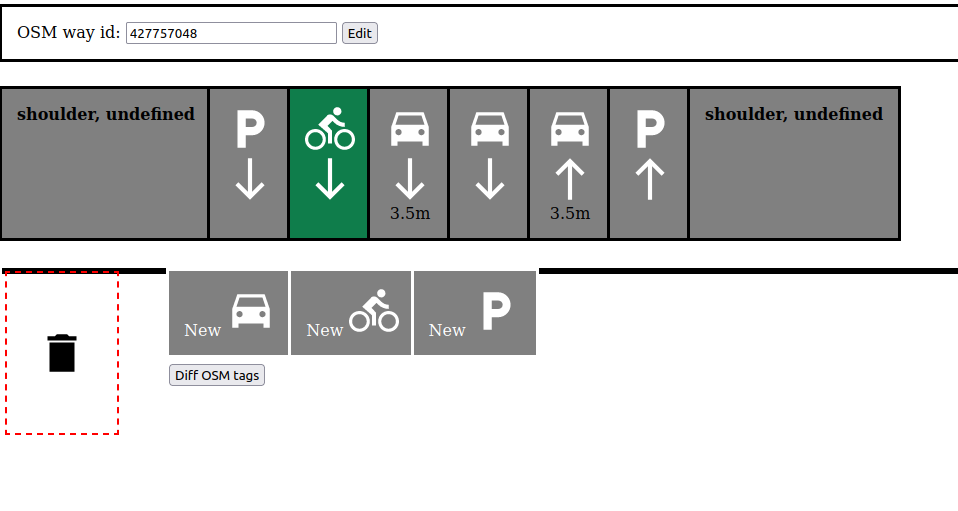
How you can use it: GIS
- Export the polygons, use in your QGIS projects
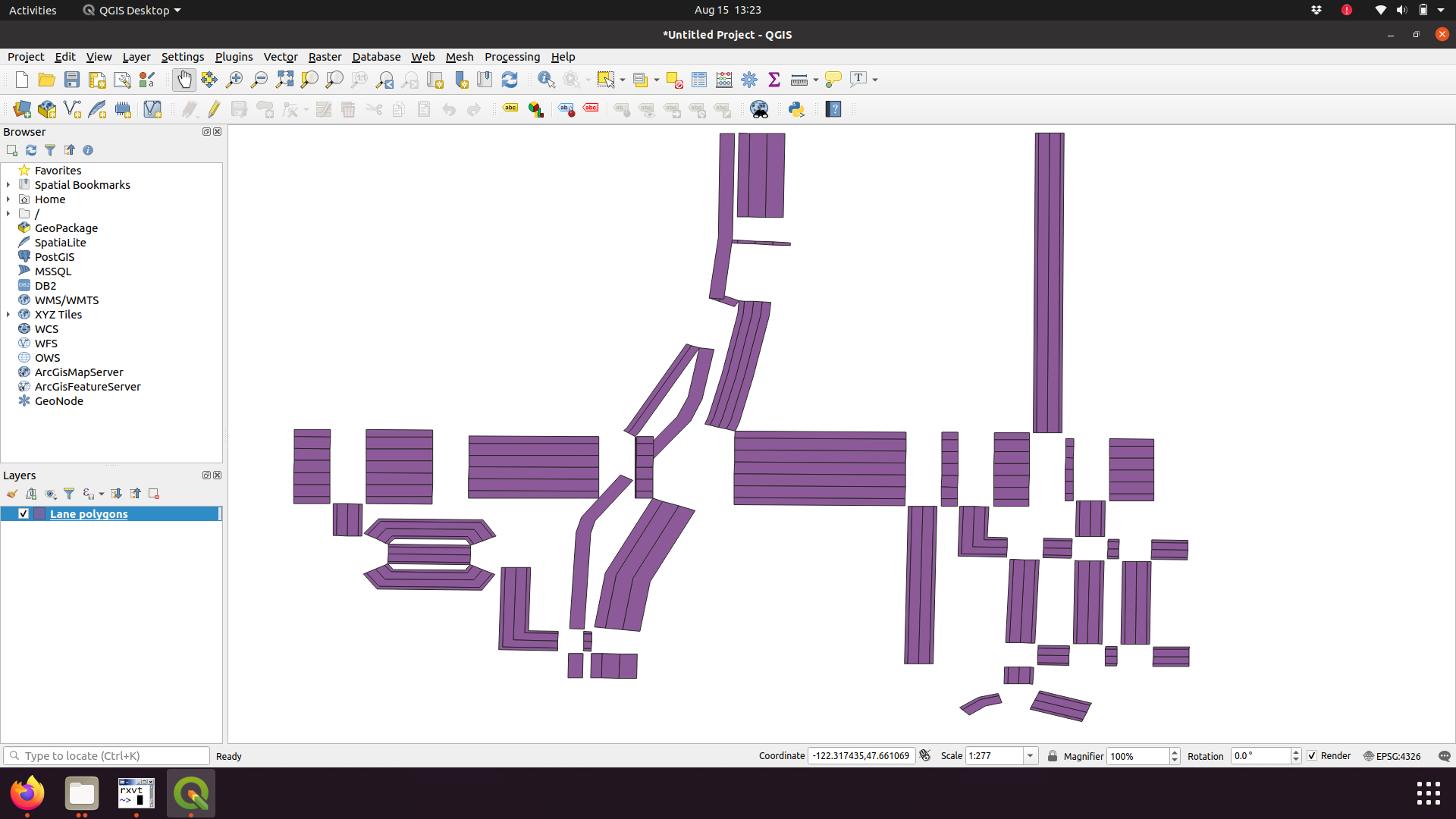
How you can use it: OSM tool authors
- Call the library from any language and build anything on top of it!
- Working: Rust, JavaScript / browser
- Planned: Java, Python, R
- Worst case: call a command-line tool
- Contribute upstream to fix the hard problems
How you can use it: OSM tool authors
- The API
- Import this osm.xml file (or grab from Overpass)
- Run these transformations to simplify the network
- Get lane details (so you could define your own routing score function for walking safety/comfort)
- Render geometry to GeoJSON (polygon areas, lane markings)
- More later: routing, isochrones, tracing areas between roads
Technical choices
- Rust: extremely performant, language makes it hard to introduce some bugs, native or web
- Output is just a single file (or in-memory)
- No databases
- No complex deployment, just static file hosting
- Up to “city scale”
- We could look into tiling
Example transformations
Transformation: simple sausage link
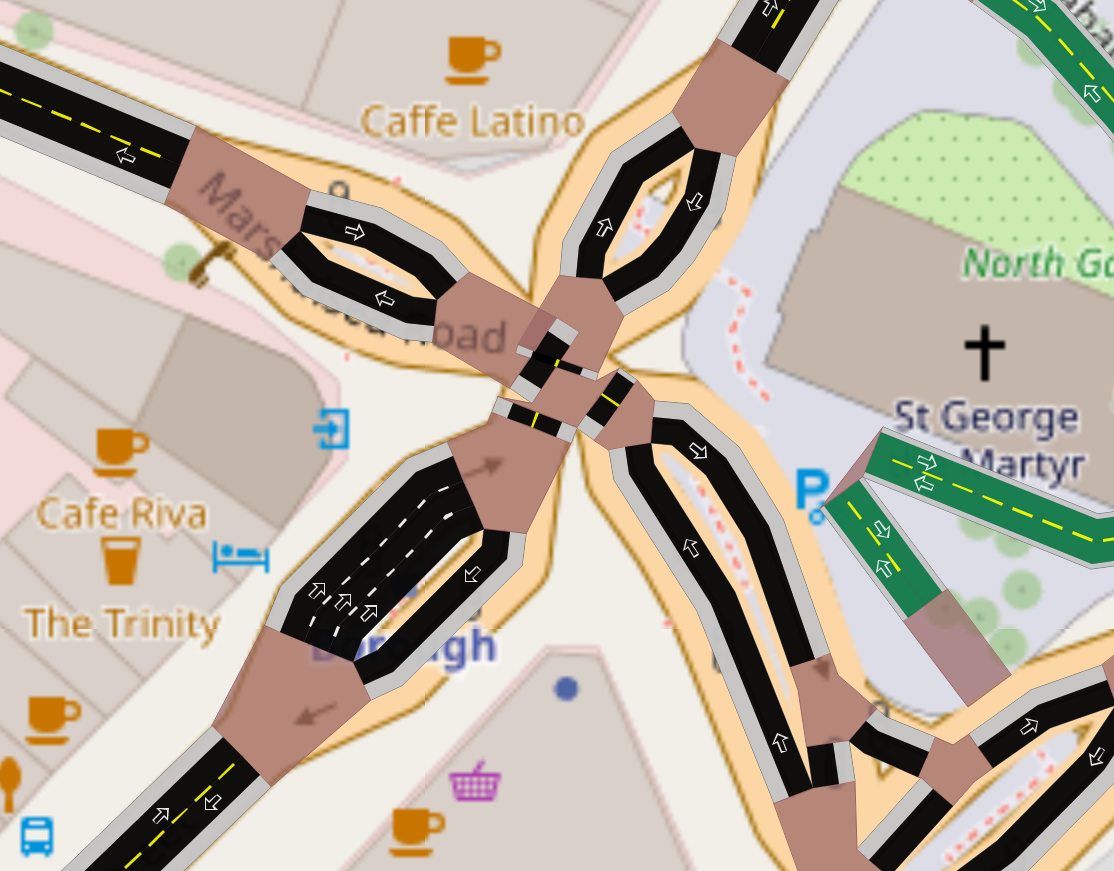
Transformation: simple sausage link
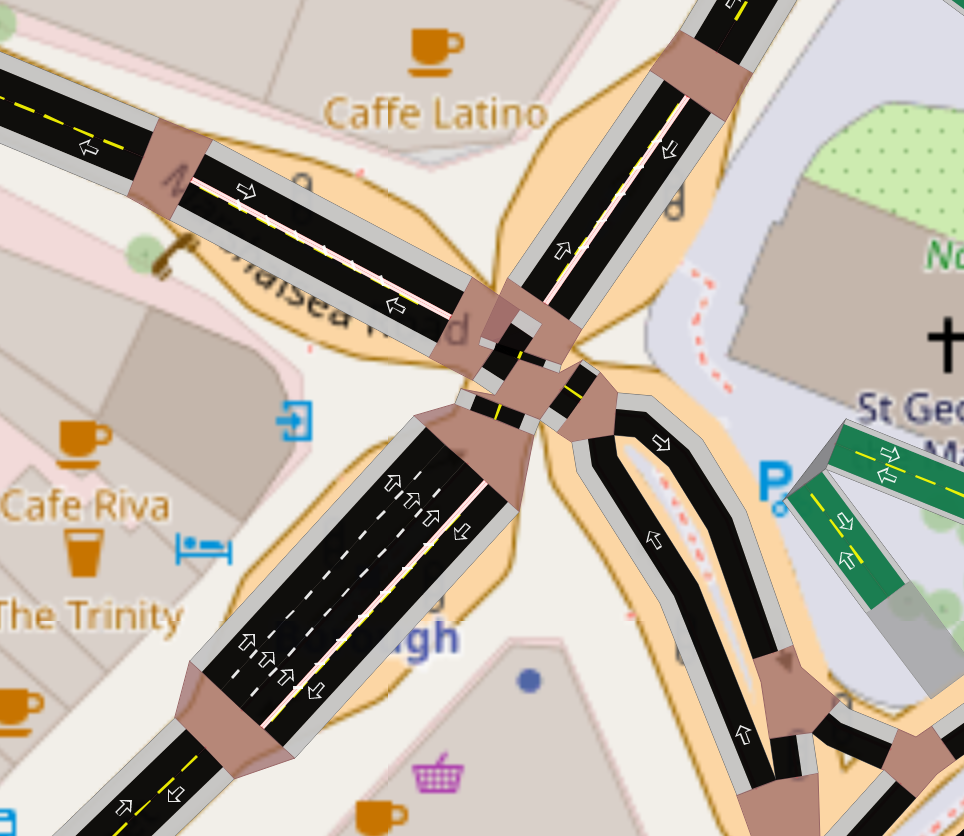
Transformation: separate cycletracks
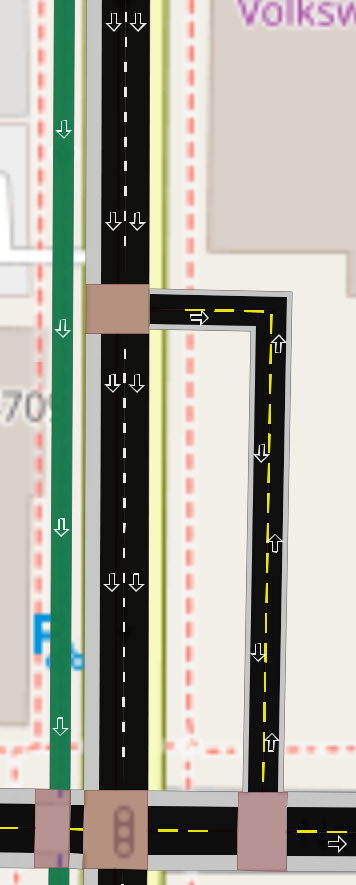
Transformation: separate cycletracks
We're only pattern matching on one type of separate cycleway right now.
This represents a single RawRoad that's parallel to one or more main_roads.
X--X
C M
C M
C X
C M
C M
X--X
C is the cycleway segment.
X are intersections.
M are main roads -- note there are two matching up to this one cycleway.
The '-'s are short connector roads between the two.Transformation: separate cycletracks
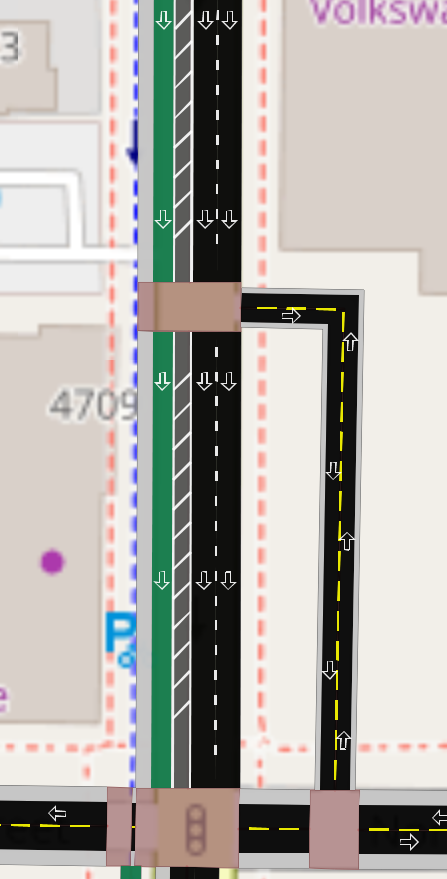
Transformation: dual carriageways
Using transformations
- Configurable
- an OSM editor: don’t merge intersections or parallel roads
- routing, rendering, transportation analysis: opt into more
Writing transformations
- Pattern match on some situation (looking at both graph and geometry)
- Label what’s matched for debugging
- Resolution:
- Graph (remove edges, reconnect something)
- Geometry (straighten the line between dual carriageways)
- Lanes (append the lanes from one road onto another, inserting a barrier lane)
Writing transformations
- Interactive development / debugging
- Use StreetExplorer and step through (visual print debugging)
- Testing
- Clip representative OSM examples
- Catch regressions
Challenges and next steps
Other features (optional)
- Tracing around the block
- requires edge of the road and intersection polygons
- Routing
- Score functions for cycling safety/comfort can use detailed lane information
- How many traffic signals does a route go through?
- Isochrones / 15-minute walk-sheds
Other features (optional)
- Why not Valhalla, GraphHopper, OSRM?
- A/B Street needs this, maybe others do too
- Need to run in a browser offline, no remote servers
- Edit the street network and efficiently calculate consequences
- Extra layers (or separate projects) built on top of osm2streets
osm2lanes editor
osm2lanes editor
- help needed with osm2lanes itself and the web app (JS)
- prototype as a separate app, but ideally integrate with iD and JOSM
Promote area:highway tagging
- We’ll never algorithmically figure out all the cases
- Make it easier to map the curb or more detail for hard cases
- osm2streets can generate reasonable defaults for most cases
- How can osm2streets use existing tagged areas to override?
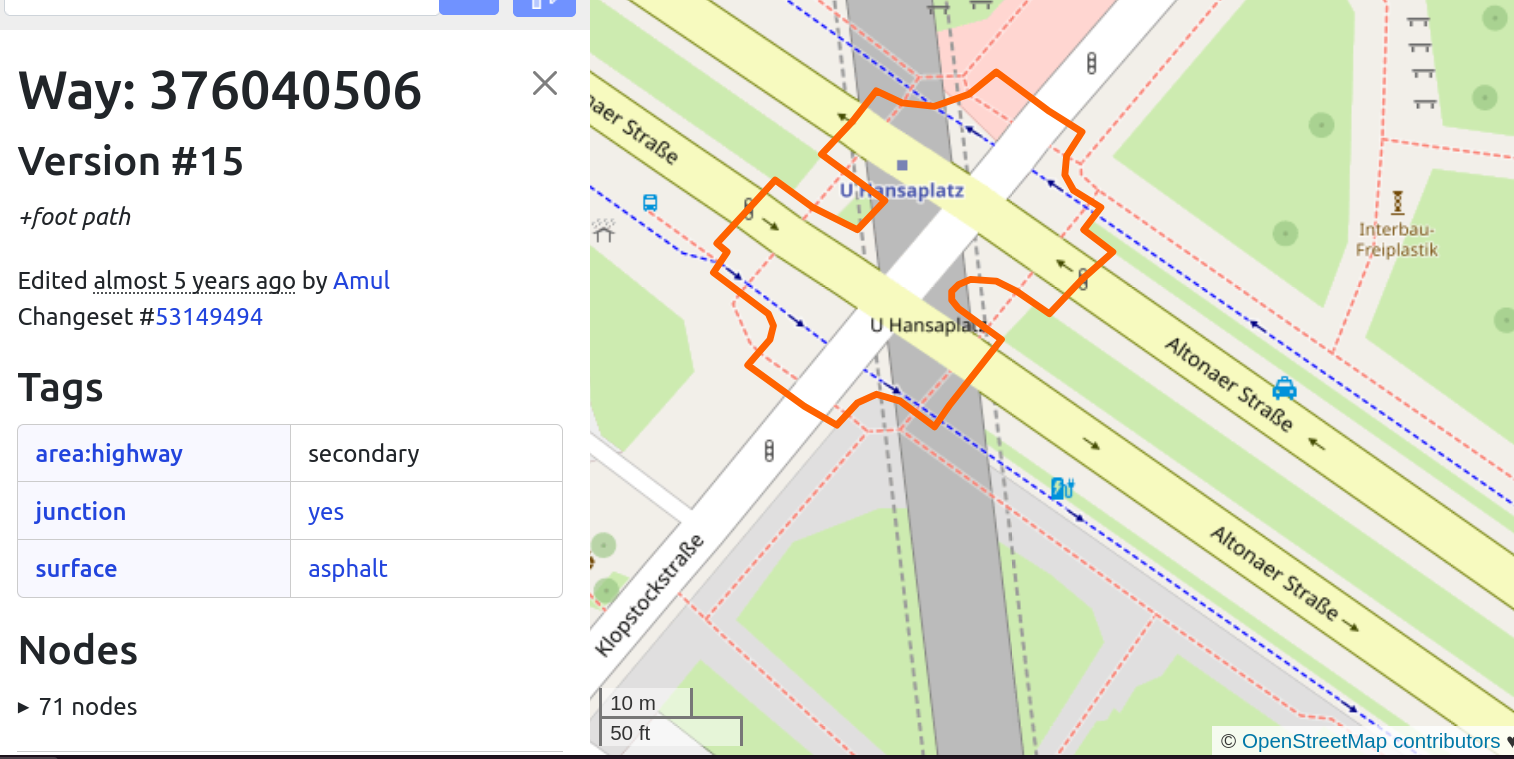
The schema itself
- Lanes aren’t thickened linestrings – the shape could be more detailed
- Crosswalks
- Modal filters / bollards
- Advanced stop lines, bike boxes
- Pedestrian crossing islands
How you can help
- Programming, integrating the API in your tools, working on the schema, design
- Bug reports (for osm2lanes – defining the correct result)
- Lane rendering needs design
Thanks!
- osm2streets.org
- https://github.com/a-b-street/osm2streets
- https://github.com/a-b-street/osm2lanes
- dabreegster@gmail.com
- https://twitter.com/CarlinoDustin
- These slides: https://dabreegster.github.io/talks/sotm_2022/slides.html
- Special thanks to Ben Ritter, Michael Droogleever, Tobias Jordans